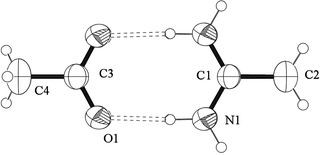Supramolecular aggregation by means of charge-assisted hydrogen bonds in acid-base adducts containing amidinium cations
Abstract
Amidinium

* Corresponding authors
a
Centro di Strutturistica Diffrattometrica and Dipartimento di Chimica, University of Ferrara, via L. Borsari 46, Ferrara, Italy
E-mail:
frt@unife.it
Amidinium

 Please wait while we load your content...
Something went wrong. Try again?
Please wait while we load your content...
Something went wrong. Try again?
V. Ferretti, V. Bertolasi and L. Pretto, New J. Chem., 2004, 28, 646 DOI: 10.1039/B314143H
To request permission to reproduce material from this article, please go to the Copyright Clearance Center request page.
If you are an author contributing to an RSC publication, you do not need to request permission provided correct acknowledgement is given.
If you are the author of this article, you do not need to request permission to reproduce figures and diagrams provided correct acknowledgement is given. If you want to reproduce the whole article in a third-party publication (excluding your thesis/dissertation for which permission is not required) please go to the Copyright Clearance Center request page.
Read more about how to correctly acknowledge RSC content.
 Fetching data from CrossRef.
Fetching data from CrossRef.
This may take some time to load.
Loading related content
